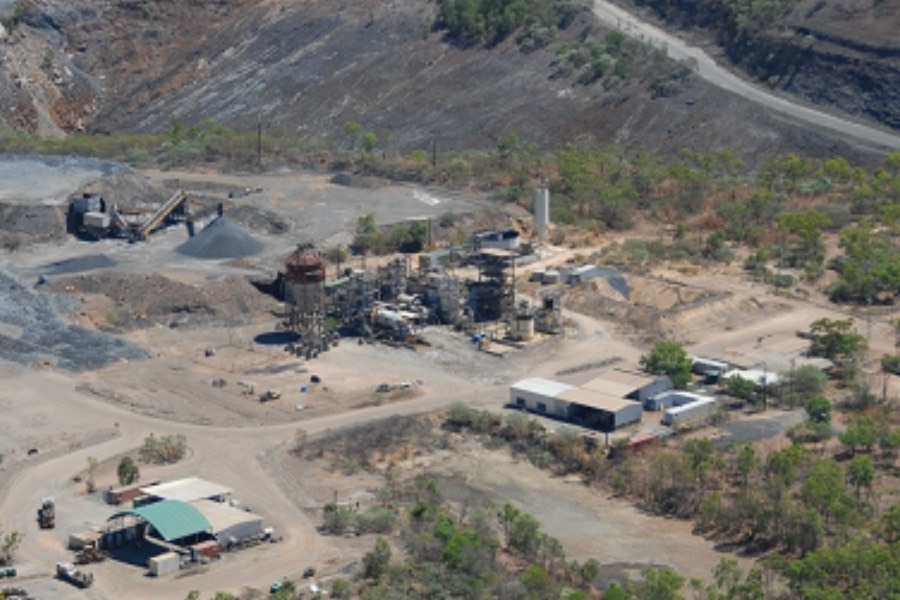The miner’s shares rocketed after it pocketed a tidy profit on the sale of one of its Australian gold assets
Key Takeaways:
China’s Hanking pocketed a A$150 million profit from the sale of one of its Australian gold mines, benefiting from record-high prices of the precious metal
The gold miner will distribute one-third of its net proceeds from the sale to shareholders as a special dividend
By Lau Chi Hang
Despite its background as an iron ore miner, China Hanking Holdings Ltd. (3788.HK) is finding better business these days as a mine seller, reflected in its stunning string of recent profits from trading in goldmines.
Earlier this month, the company it sold its entire stake in Primary Gold, an Australian holder of various gold-mining assets, to Inner Mongolia Huineng Coal and Electricity Group for A$300 million ($202 million). At the same time, Inner Mongolia Huineng agreed to buy nearly A$3.12 million worth of environmental bonds from Hanking related to the assets.
Primary Gold’s main asset is the Mount Bundy goldmine in Australia. It also owns exploration licenses, mining licenses, a water treatment plant and a 25-ton-per-day mining plant. The company lost nearly A$67 million and A$85 million in 2022 and 2023, respectively.
Positive cash flow
Hanking said the sale will allow it to focus its limited resources on development of its Cygnet goldmine in Western Australia. It added that because Primary Gold is an asset currently in development with zero cash flow, the sale would not negatively impact Hanking’s operations, but, to the contrary, would generate significant positive cash flow.
The transaction is expected to bring in net proceeds of approximately A$150 million. Hanking said it will use about two-thirds of that to develop itself into a sustainable gold-producing company, including through development of its Cygnet gold project and the growth of its ore reserves. The remaining one-third of proceeds will be paid as a special dividend to Hanking shareholders.
Hanking’s Hong Kong-listed shares jumped on news of the plans for a special dividend, breaking the HK$1 barrier to rise as high as HK$1.03 the next day, before closing up nearly 7% at HK$0.94. But even after the gain, the stock still trades more than 30% below its peak of HK$1.35 this year.
Established in 2010 and listed in Hong Kong in 2011, Hanking mainly engages in exploration, mining and the sale of iron ore in China. It also produces ductile iron products for wind power generation, and has gotten into the development of Australian gold mines as well.
Profiting on gold mine sales
The Primary Gold sale isn’t the first for Hanking, which has found similar big profits by speculating on other projects. The company acquired the SXO goldmine in Australia in 2013 for A$19.7 million, and then sold it for A$330 million just four years later. It ultimately pocketed roughly $100 million after deducting for the purchase price and subsequent investments after the original purchase.
The company may have been looking for an encore performance when it acquired Primary Gold in 2018. Its latest deal brought a similar payback on the back of its development of the project, combined with booming demand that lifted gold prices from $1,300 per ounce at the time of the purchase to more than $2,400 this year.
It may seem that this mine operator isn’t really that interested in actual gold mining, but is more into trading gold mines. Its business logic is relatively simple: acquire gold mines in Australia when gold prices are low, then invest in exploration, rehabilitation and infrastructure, while getting necessary approvals. Then sell the mines for a windfall when gold prices pick up.
Apart from its shining record in gold investment, Hanking’s actual mining business has also been strong in recent years. Its revenue rose 16.4% year-on-year to 3.03 billion yuan ($418 million) in 2023, as it swung to an annual profit of 150 million yuan from a loss of 53.01 million yuan in 2022 on increasing production. The company produced 1 million tons of iron ore concentrate last year, up nearly 30% year-on-year, and 871,000 tons of high-purity iron, up 31%.
Meanwhile, Hanking also returned to the black by lowering its own costs. It did that for its iron ore concentrates business by increasing its production and using digitalization for greater management efficiency, lowering its cost per ton of iron ore concentrate last year by 5.45% year-on-year to 364 yuan.
The company has also kept its debt in check, lowering its net debt ratio from 39.9% at the end of 2022 to 31.2% at the end of last year.
Future cash cow in Cygnet?
Hanking has targeted production of about 950,000 tons of iron ore concentrate and 840,000 tons of high-purity iron in 2024, which would be 5% and 3.4% lower, respectively, than last year. That means revenue from its core operations may not change much, assuming iron ore prices this year are close to last year’s. Accordingly, it may have to look for more blockbuster asset sales to keep its profits flowing over the next few years.
The company still owns the Cygnet Gold Mine, located in Western Australia with an estimated 8 million tons of ore containing 4.6 grams per ton, for total output of 1.18 million ounces (36.7 tons) of gold. The company has already conducted licensing and technical studies to develop the project.
Hanking expects gold prices will continue to be strong this year, propped up by worldwide central banks’ desire to hold the metal as a safe-haven asset, and as it remains an important hedge against geopolitical and economic uncertainties and the Fed’s potential for cutting interest rates. That means investors may be watching to see if Hanking may also cash out of Cygnet to capitalize on continued strong demand for the precious metal.
